Exploring Berlin’s turbulent 20th-century history is a profoundly moving experience. This walking tour delves into the city’s past, guiding visitors through significant landmarks that bear witness to the ramifications of World War II. From the Anhalter Bahnhof, once a gateway for refugees, to the Topography of Terror’s haunting reminders of Nazi atrocities, the tour offers a profound understanding of how individual lives were shaped by the war’s devastation. As the journey unfolds, participants gain insights into the struggles for reunification and the collective resilience that has emerged from this complex and challenging history.
Quick Points
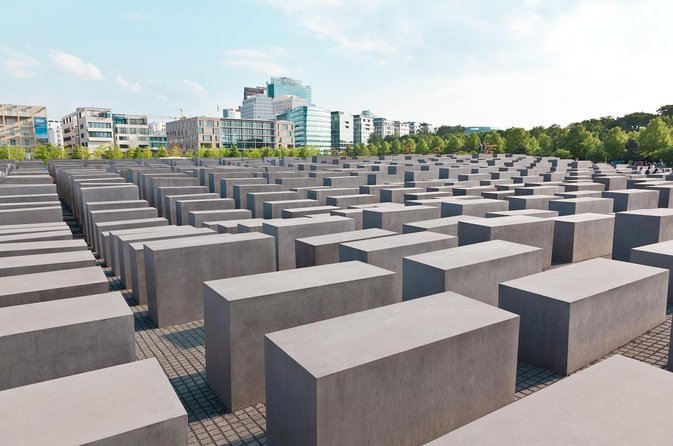
- The Anhalter Bahnhof, a historic railway terminal, serves as a gateway to explore the experiences of refugees and soldiers during the 20th century.
- The Topography of Terror museum uncovers the atrocities committed by the Gestapo and SS, providing a somber exploration of Nazi history.
- The Berlin Wall Memorial illustrates the division and personal accounts of those affected by the partition of the city during the Cold War era.
- The Reichstag Building, a symbol of German reunification, offers insights into the country’s journey from division to unity after World War II.
- The Brandenburg Gate, a witness to pivotal moments in German history, reflects the evolution of the German people and their resilience.
Anhalter Bahnhof: Gateway to the Past
The Anhalter Bahnhof, once a bustling railway terminus, now stands as a poignant gateway to the past.
This historic site witnessed the arrival of countless refugees and soldiers during the turbulent 20th century, making it a crucial starting point for the walking tour.
As visitors gather here, they’ll be transported back in time, immersed in the stories of triumph and tragedy that unfolded within these walls.
The guide will expertly navigate the group, guiding them through the city’s complex history without the need for a map.
From this vantage point, the journey to uncover Berlin’s World War II heritage begins, setting the stage for a thought-provoking and enriching experience.
If you're enjoying exploring Berlin on foot, you'll love these other walking tours we recommend
Topography of Terror: Uncovering Nazi Atrocities
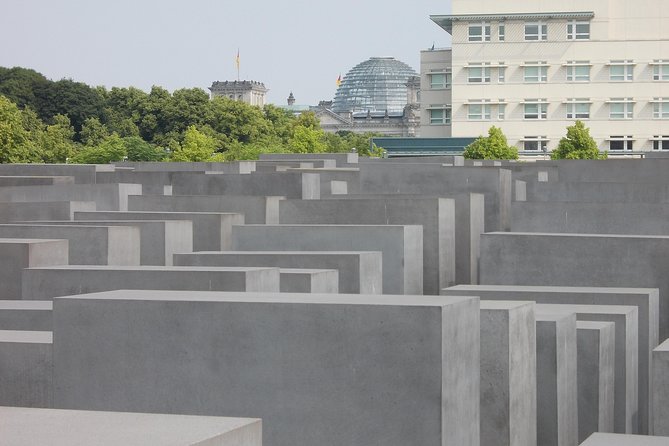
Departing from the Anhalter Bahnhof, the group now makes its way to the Topography of Terror, an open-air museum that illuminates the dark history of Nazi Germany. This sobering site stands on the former headquarters of the Gestapo and SS, where visitors can explore the remnants of these institutions and learn about the atrocities committed under their watch. A table provides further context:
| Exhibit | Description |
|---|---|
| Documentation Center | Houses an extensive archive and multimedia displays |
| Outdoor Exhibit | Traces the path of the Berlin Wall and key locations |
| Excavated Cellars | Reveals the chilling underground detention cells |
| Memorial Plaques | Commemorate victims of Nazi persecution |
| Audio Guides | Offer detailed historical narration in multiple languages |
Grappling with this dark chapter is a somber but crucial part of the tour, allowing participants to better understand the horrors of the past.
Berlin Wall Memorial: Divided City, Divided Lives
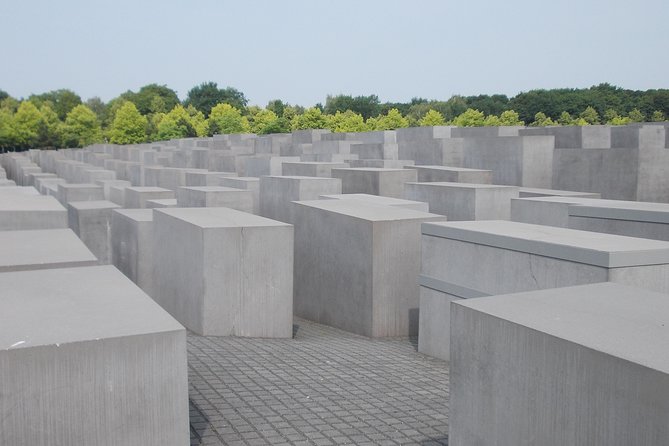
From the Topography of Terror, the walking tour now heads towards the Berlin Wall Memorial, a poignant reminder of the division that once split the city in two.
Visitors will learn about the construction of the wall, the attempts of East Berliners to escape, and the eventual fall of this symbol of the Cold War.
The memorial features remnants of the wall, as well as documentation and personal accounts, providing a powerful insight into the lives of those affected by this historic divide.
The tour then continues to the Reichstag building and the Brandenburg Gate, offering a comprehensive understanding of Germany’s 20th century history.
Reichstag Building: Symbol of German Reunification
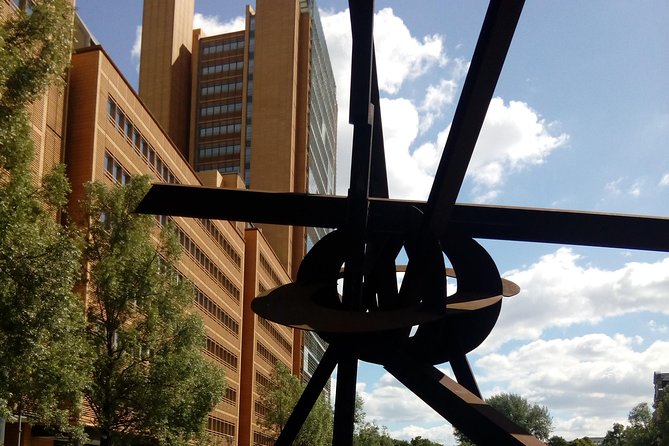
Leaving the Berlin Wall Memorial behind, the walking tour now approaches the iconic Reichstag building, a powerful symbol of German reunification.
Rebuilt after World War II, the Reichstag is home to the German parliament and offers panoramic views of the city from its famous glass dome. Visitors can climb to the top, observing the historical complexities that have shaped modern Germany.
The Reichstag’s restoration reflects the country’s commitment to democracy and transparency, a stark contrast to its tumultuous past.
Standing before this architectural marvel, the tour group gains a deeper understanding of Germany’s journey from division to unity, a testament to the resilience of the human spirit.
Brandenburg Gate: Witness to History’s Turning Points
The Brandenburg Gate stands as a powerful symbol, bearing witness to some of the most pivotal moments in German history.
Located at the heart of Berlin, this iconic structure has endured through the city’s darkest and brightest days. Its neoclassical design has served as a backdrop for:
- The Nazi regime’s military parades, showcasing their false sense of power and control.
- The joyous celebrations of German reunification in 1990, as the gate symbolized the end of a divided nation.
- Ongoing political and social demonstrations, highlighting the gate’s enduring role as a stage for the nation’s collective expression.
Today, the Brandenburg Gate remains a must-see destination, a testament to the resilience and evolution of the German people.
Fascinated by Berlin's past? More historical tours we've covered
Navigating the city’s rich history without a map may seem daunting, but the walking tour offers a guided experience that brings the past to life.
The tour guides expertly navigate the city streets, leading participants to key historical sites. Without the distraction of a map, visitors can fully enjoy the stories and significance of each location.
The knowledgeable guides provide context and insights, ensuring a seamless and engaging journey through Germany’s 20th-century history.
This approach allows participants to focus on the sights, sounds, and emotions of the past, creating a more profound connection to the city’s complex legacy.
Inclusive and Accessible Tour Experience
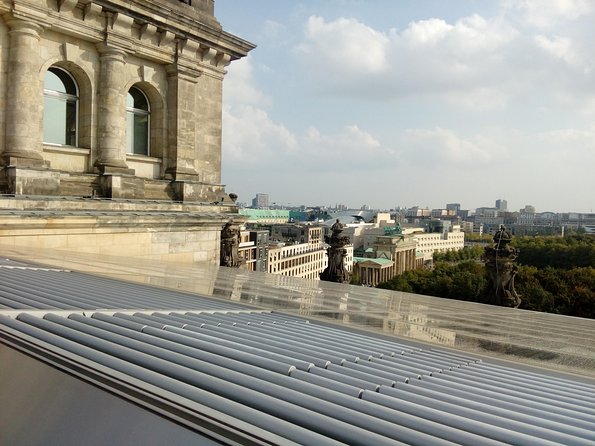
Designed to accommodate a diverse range of visitors, the walking tour offers an inclusive and accessible experience.
The tour is wheelchair accessible and stroller friendly, ensuring everyone can participate comfortably. Service animals are also welcome, making it a welcoming environment for those with special needs.
Plus, the tour is conveniently located near public transportation, making it easily accessible for those relying on local transit.
The tour’s inclusive nature allows participants to fully enjoy the historical exploration, fostering a sense of unity and understanding throughout the experience.
- Wheelchair-accessible and stroller-friendly, ensuring everyone can participate.
- Service animals allowed, creating a welcoming environment for those with special needs.
- Conveniently located near public transportation, facilitating easy access.
Preparing for the Physical Demands
While the tour offers an accessible and inclusive experience, participants should be mindful of the moderate physical demands.
The walking tour covers several key historical sites, requiring a moderate level of fitness. Travelers with back problems, pregnancy, heart issues, or serious medical conditions may find the tour challenging. It’s essential to consider your physical capabilities before booking.
The tour involves navigating without a map, so a good level of mobility and endurance is necessary. However, the tour is stroller-friendly and allows service animals, accommodating a range of needs.
Since You Asked
Can I Bring My Own Food and Beverages on the Tour?
According to the tour overview, outside food and beverages are not mentioned. However, the tour includes snacks and drinks, so bringing your own may not be necessary. It’s best to check with the tour provider for their policy on outside items.
Is Photography Allowed at All Tour Sites?
Photography is allowed at most tour sites, but visitors are advised to follow any site-specific rules or restrictions. Some sensitive locations may prohibit photography to respect the historical significance and solemnity of the sites.
Do I Need to Bring Any Special Equipment or Gear?
You don’t need any special equipment for this tour. However, you should wear comfortable walking shoes, dress for the weather, and bring any necessary medications or snacks. The tour provides a licensed guide and any needed refreshments.
Will There Be Opportunities to Purchase Souvenirs During the Tour?
The tour does not include specific stops for souvenir shopping. However, there may be opportunities to browse small shops or markets along the route. Participants can inquire with the guide about options to purchase souvenirs during or after the walking tour.
Can I Join the Tour if I Arrive Late to the Meeting Point?
Unfortunately, you can’t join the tour if you arrive late to the meeting point. The tour departs promptly, and the guide won’t wait for late arrivals. It’s best to arrive at the designated meeting time to participate fully in the experience.
The Final Verdict
The "WWII and Its Ramifications" walking tour offers a profound and immersive exploration of Berlin’s complex history. Visitors will gain a deeper understanding of the city’s resilience, as they traverse significant sites and uncover the lasting impact of war on individual lives and the collective memory of a nation. This tour provides an invaluable opportunity to engage with the past and reflect on the path towards healing and reunification.
More Walking Tours in Berlin
More Tours in Berlin
More Tour Reviews in Berlin
Not for you? Here's more things to do in Berlin we have recnetly reviewed
- 5 Best Craft Beer Tours And Tastings In Berlin
- 3 Best Shopping Tours In Berlin
- 7 Best Christmas Experiences In Berlin
- 16 Best Dining Experiences In Berlin
- 2 Best 2 Day Tours In Berlin
- 4 Best Lunch Experiences In Berlin
- 2 Best Full-Day Tours In Berlin
- 15 Best Photography Experiences In Berlin
- 12 Best Dinner Tours In Berlin
- 25 Best Cruises And Boat Tours In Berlin
- 25 Best Food Tours In Berlin
- Third Reich Quest Experience in Berlin
